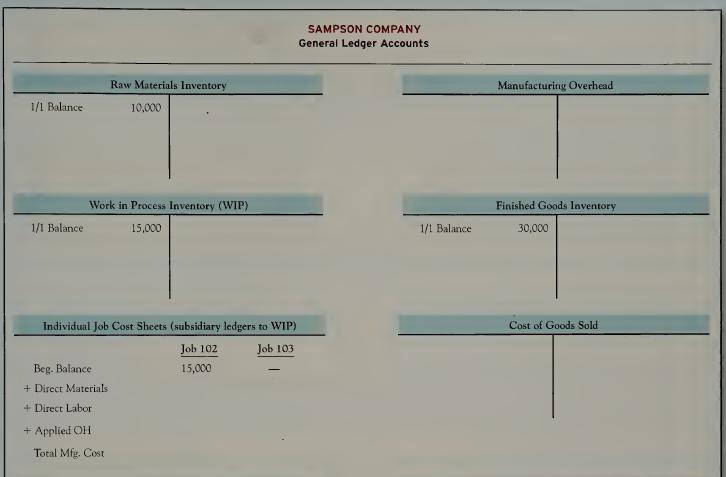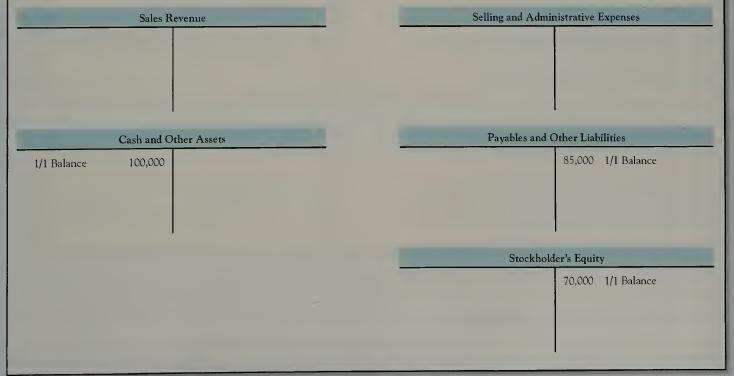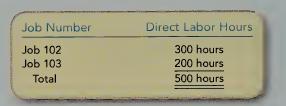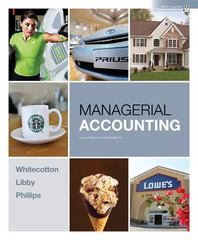Sampson Company uses a job order cost system with overhead applied to products based on direct labor
Question:
Sampson Company uses a job order cost system with overhead applied to products based on direct labor hours. Based on previous history, the company estimated its total overhead for the coming year (2009) to be \($240,000\) and its total direct labor hours to be 6,000.
On January 1, 2010, the general ledger of Sampson Company revealed that it had one job in process (Job 102) for which it had incurred a total cost of \($15,000.\) Job 101 had been finished the previous month for a total cost of \($30,000\) but was not yet sold. The company had a contract for Job 103 but had not started working on it yet. Other balances in Raw Materials Inventory and other assets, liabilities, and owner’s equity accounts are summarized here:


During January, the company had the following transactions:
(a) Purchased \($10,000\) worth of raw materials on account.
(b) Issued the following materials into production:

(c) Recorded salaries and wages payable as follows:

(d) Applied overhead to jobs based on the number of direct labor hours required:

(e) Recorded the following actual manufacturing costs:

(f) Recorded the following general and administrative costs:

(g) Sold Job 101, which is recorded in Finished Goods Inventory at a cost of \($30,000,\) for \($55,000.\)
(h) Completed Job 102 but did not sell it; Job 103 is still in process at year-end.
Required:
1. Compute and interpret the predetermined overhead rate.
2. How much overhead would be applied to jobs during the period?
3. Compute the total cost of Jobs 102 and 103 at the end of the period. Where would the cost of each of these jobs appear on the year-end balance sheet?
4. Prepare journal entries to record the January transactions and post the entries to the general ledger T-accounts given earlier in the problem.
5. Calculate the amount of over- or underapplied overhead.
6. Prepare the journal entry to dispose of the overhead balance assuming that it had been a year-end balance instead of a month-end balance. Post the effect to the general ledger T-accounts.
7. Prepare a statement of cost of goods manufactured and sold report including the adjustment for over- or underapplied overhead.
8. Prepare a brief income statement for Sampson Company.
Step by Step Answer:

Managerial Accounting
ISBN: 9780078110771
1st Edition
Authors: Stacey WhitecottonRobert LibbyRobert Libby, Patricia LibbyRobert Libby, Fred Phillips





